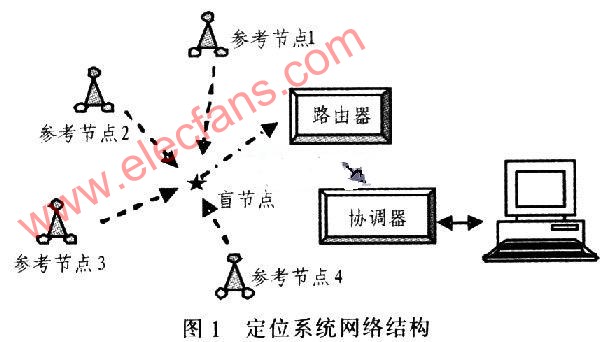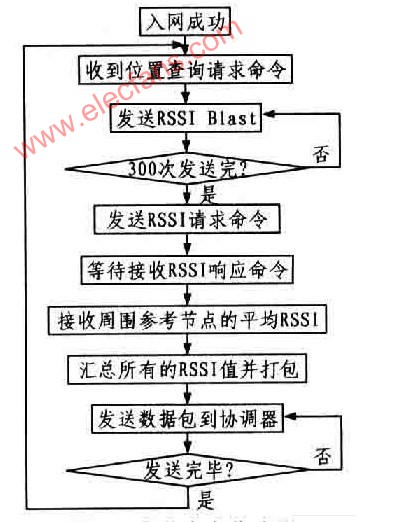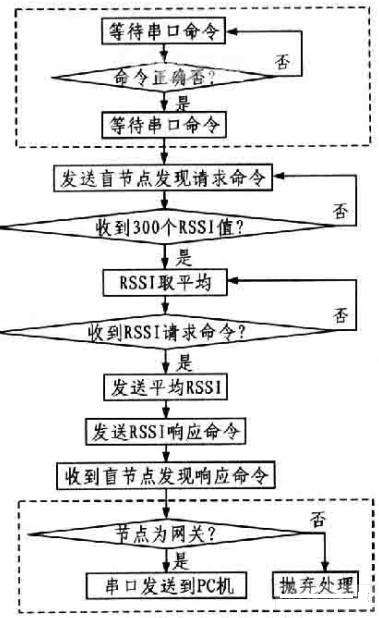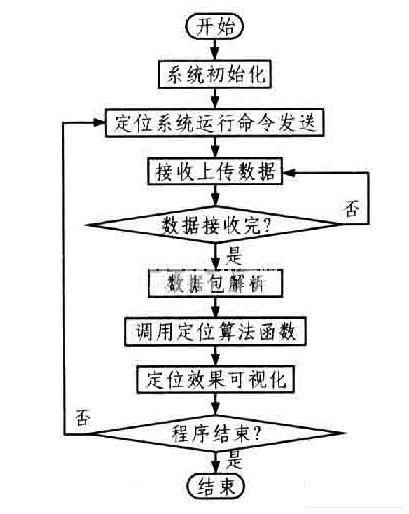Positioning is an important supporting technology for wireless sensor (WSN) networks and has a wide range of applications. ZigBee technology is a short-range, low power consumption, low data transmission rate, low-cost two-way wireless communication technology, can be embedded in various devices, while supporting geolocation functions. The application of ZigBee technology in wireless sensor networks is a key point of research today, and the research and application of related positioning technologies have also received widespread attention.
1 WSN positioning overview
1.1 Research status of WSN positioning
The wide application of wireless sensors has led to rapid development of its positioning technology. TI launched a system-on-chip (SoC) solution CC243l with a hardware positioning engine, which can achieve a positioning accuracy of 3 to 5 m and a resolution of 0.25 m in typical applications. As the positioning algorithm is cured, its application lacks flexibility . On the other hand, positioning using common wireless transceiver devices combined with software algorithms has received widespread attention.
1.2 Introduction to CC2430
CC2430 is a 2.4 GHz RF system single chip launched by TI. The device integrates ZigBee RF front end, memory and microcontroller. The 805l core used by the microcontroller has 128 KB of programmable flash memory and 8 KB of RAM. It also contains an A / D converter, timer TImer, AES128 co-processor, watchdog timer, and sleep mode of 32 kHz crystal. , Timer power-on reset circuit and external 21 programmable I / O ports, support CSMA-CA function specified in IEEE802.15.4 on hardware. CC2430's rich resources, low power consumption and low cost make it very suitable for wireless sensor networks.
2 Positioning system network structure diagram
The system architecture is shown in Figure 1. The wireless sensor positioning system includes three types of nodes: coordinator, reference node and blind node. The position of the reference node is known, and the blind node uses the information of the known reference node to determine its own position by means of a certain positioning algorithm to complete its own positioning.

The design process of a complete wireless sensor positioning system includes three aspects: hardware node design, positioning node software design and host computer software design. The hardware design provides a positioning hardware platform for the system. The positioning node software design mainly completes the data transmission process of the wireless transceiver module. The host computer software receives wireless data collection, uses a specific algorithm to complete the positioning, and dynamically displays the positioning results.
3 WSN positioning node hardware design
3.1 Overall design
The positioning node hardware design framework is shown in Figure 2. The hardware design is divided into two parts: wireless communication module design and wireless test module design. The wireless communication module provides an interface for wireless data between nodes, and it is the core part of the node. The wireless test module realizes the data transmission between the PC and the coordinator node through the RS232 serial port conversion circuit.

Figure 2 Block diagram of hardware design of positioning node
3.2 Hardware implementation
The wireless communication module includes CC2430 and related peripheral circuits. Because the CC2430 integrates the 8051 core and the wireless transceiver module, it simplifies the circuit design process, omits the design of the interface circuit between the microcontroller and the wireless transceiver device, and shortens the development cycle.
The serial port conversion circuit of the wireless test module uses a MAX3232 dual-channel converter with an operating voltage range of 3 to 5.5 V. This circuit is mainly used for serial port communication between the coordinator and the PC.
For RF circuits, it is crucial to solve the interference problem between devices. It is recommended that the wireless communication module use a PCB double-layer board, the top layer is used for signal wiring, the bottom layer is used for power and ground wiring, and a small number of vias are used to connect to ground in open areas without wiring. In addition, be sure to ground the bottom of CC2430 reliably. Peripheral device size should be as small as possible, can use 0402 specification resistance container. If you use a PCB antenna, in order to reduce the impact of the plate on the PCB antenna and obtain the best performance of the antenna, you can use RF4 plate with a dielectric constant of 4.5, a thickness of 1 mm, and a copper thickness of 0.35 μm. There are no special requirements for the production of wireless test module PCB.
4 Positioning node software design
There are three types of functional nodes in the wireless sensor positioning network, namely gateway (coordinator), reference node (router) and blind node (terminal). The gateway plays a vital role in the entire system. First, it must receive the commands from the host computer, open the network, wait for other types of nodes to enter the network, and secondly receive the valid data fed back by each node and transmit it to the host computer software for processing. The reference node is a kind of static node whose position is known. Its task is to receive the information packet with RSSI (Received Signal Strength Indicator) value and calculate the RSSI average value. Finally, the blind node packs each RSSI average value Send to the gateway, and return to the host computer monitoring software for processing. A blind node is a type of movable node that can move arbitrarily within the area surrounded by reference nodes. The blind node broadcasts the RSSI cluster to the surrounding space, and receives the average RSSI value of the reference node within one hop. After packaging the received average RSSI value, it is wirelessly sent to the coordinator node. Figure 3 shows the overall sensor network positioning communication process.

Figure 3 Sensor network positioning communication network process
Considering that the gateway node can be used as a reference node in addition to networking and serial communication functions, it is only necessary to write two types of node programs. The unique functions of the gateway node are marked with dotted lines. The workflow of various nodes is shown in Figure 4 and Figure 5.

Figure 4 Blind node location process

Figure 5 Net joint positioning process
5 PC software design
5.1 Host computer function and its realization
In the host computer monitoring software of the wireless sensor positioning system, the functions related to positioning mainly include two categories: positioning engineering management and positioning information processing. The positioning project management completes the function of loading the positioning area schematic diagram and configuring reference node coordinate information. Positioning information processing completes parameter collection and data processing functions. Specifically, the positioning engineering management needs to include the following three aspects: 1) Load the positioning area plan, and the user can select the positioning area in bmp, jpg, gif and other formats for a specific positioning scenario; 2) Configure the reference node information, the user configures the reference Node and set the reference point number in the project, mark the position of the reference node in the schematic diagram of the positioning area; 3) Save and modify the project, save and modify the project information at any time. The positioning information processing includes two aspects: 1) Provide an interface between the PC and the coordinator, usually using a serial port to communicate with the coordinator, the PC sends command information downward, and the coordinator reads the data upward. 2) Area positioning, positioning based on the information read from the reference node and displaying and saving the positioning result.
The function realization flow of the host computer is shown in Figure 6. Among them, system initialization includes: positioning area schematic loading, area size parameter setting, reference node position setting and serial port related parameter setting, and serial port opening and other functions.

Figure 6 The realization process of the host computer
5.2 Selection of positioning algorithm
Based on the received signal strength indicator (RSSI) algorithm, the relationship between RSSI and distance is used to collect data in a specific positioning environment, fit the data, obtain the correlation curve between the two, and use the positioning algorithm based on ranging to realize the unknown node Location confirmation.
Based on the algorithm of the site signal strength database, in terms of indoor positioning, the most direct way to achieve accurate positioning is to establish the signal strength database of the site to be located, and determine the position of the blind node through numerical comparison. However, the construction of the database is time-consuming and laborious. If the indoor environment changes (such as the indoor facility has moved its position, the reference node position has been changed, etc.), it is necessary to rebuild the sampling database. In order to obtain the highest possible accuracy at a relatively low cost, the two positioning methods can be properly fused. Each algorithm has its advantages and disadvantages, select the appropriate algorithm according to the specific application needs.
6 Conclusion
This paper introduces the hardware and software design of the wireless sensor positioning system in detail. The positioning system can make full use of software methods to achieve higher positioning accuracy. Reduce the requirements for positioning hardware. The wireless sensor positioning system is maintained at a low cost. The actual test results show that the positioning system is practical and easy to implement.
Gmaii Convenience Store Pos System gives your convenience store the tools to make quick sales and maximize your profit margins.
Convenience store's gums and mints products
Boost your store`s profits
Gmaii Convenience Store Pos System speeds up your convenience store`s checkout process, giving your customers maximum, well, convenience.
Never miss out on a sale
Gmaii Convenience Store Pos System alerts you when your items are running low so you can plan ahead, and avoid leaving a bad taste in customer`s mouths.
Convenience store's cold food products
Fine-tune your products
Gmaii Convenience Store Pos System analytics allow you to test new products, see which areas of your convenience store are profitable, and which items to replace.
Free up valuable time
From initial setup, to inventory, to closing out at the end of the day, Gmaii Convenience Store Pos System simplifies running a bustling, profitable convenience store.
Customer paying with Gmaii Convenience Store Pos System
Versatile Convenience Store POS: The Carmen St. Deli Way
The Carman St. Deli of Patchogue, NY used ShopKeep`s Convenience Store POS to speed up transaction times and maximize profit margins.
Convenience Store Pos System
Pos System Restaurant,Convenience Store Pos,Convenience Store Pos Software,Best Pos System For Convenience Stores
Shenzhen Gmaii Technology Limited , https://www.gmaiipos.com